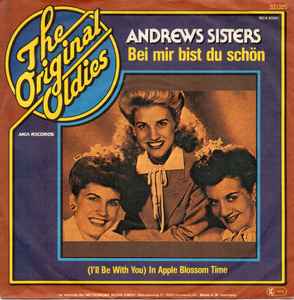About the Song:
Bob Hope believes this song got him a film contract. TY1 He and Eve Arden sang it in a scene from Ziegfeld Follies of 1936. The revue opened in January of that year and was notable for Fanny Brice’s last appearance and choreographer George Balanchine’s first Broadway appearance. SB
The song got its start because composer Vernon Duke “literally couldn’t get started.” SB He had written a melody for the song “Face the Music with Me,” and passed it on to lyricist Ira Gershwin when, as Duke said, “nothing had happened to that version.” SB Gershwin added words about a man who’d “done almost anything anyone could want to do in life, including flying around the world in a plane and even selling short just before the stock market crash,” TY1 but couldn’t get the attention of the woman he desired – in other words, he couldn’t get started with her.
Duke’s “dapper melody” MM “feels more like Tin Pan Alley than Broadway” MM and fit with Gershwin’s lyrics “like a glove – topical and slangy” MM on this “lighthearted standard.” MM Some of Gershwin’s references, such as to Franklin D. Roosevelt and Greta Garbo tied the song to a certain era, but they had such “clever, endearing charm that only a brave singer will dare to replace them.” WK
Hal Kemp recorded the song in 1936, taking it to #14. PM Two years later, trumpeter and singer Roland Bernard “Bunny” Berigan tackled the song after jazz clarinetist Johnny Mince brought him the sheet music, suggesting it “would be perfect for him to record.” SS
Berigan was born in Hilbert, Wisconsin in 1908. He became a trumpet star in the dance band era, playing with the Dorsey Brothers, Benny Goodman, Kemp, and Paul Whiteman before launching his own band. PM His take on “I Can’t Get Started” “is a virtuoso work that defines the range” WK of the trumpet with his “mastery of expression, of emotional nuance, beyond what most trumpet players can only dream of.” WK It became Berigan’s theme song DJ and is “one of the most famous trumpet showcases and ballad vocals ever.” SS
Chet Baker, Nat “King” Cole, Bing Crosby, Ella Fitzgerald, Erroll Garner, Stan Getz, Dizzy Gillespie, Billie Holiday, Louis Jordan, Charles Mingus, Charlie Parker, Sonny Rollins, Frank Sinatra, Dinah Washington, Lester Young are among the artists to do the song, turning it into a standard. WK
Resources:
First posted 1/29/2013; last updated 3/31/2023.
|










